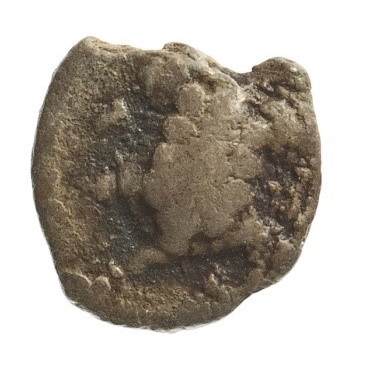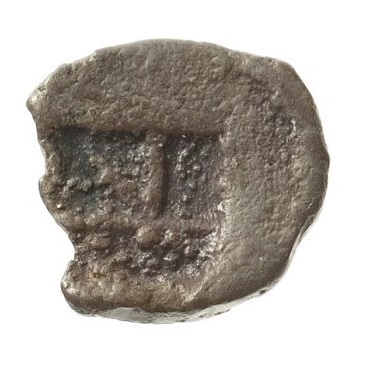Title: Obolos of Aigina - 1973.26
Acquisition number: 1973.26
Author or editor: Douglas Kelly
Culture or period: Classical Greece.
Date: 480 - 431 BC.
Material: Metal - Silver
Object type: Coins - Greek
Dimensions: 10mm (w)
Origin region or location: Greece
Origin city: Aigina.
Display case or on loan: 5
Keywords: Coin, Greek, Classical, obolos, Aigina
D.R. Sear, Greek Coins and their Values, vol. 1, Europe (London, Seaby, 1978), 2601.
C. Howgego, Ancient History from Coins (London and New York, Routledge, 1995), p.3
C.M. Kraay, Archaic and Classical Greek Coins (London, Methuen, 1976), 41 – 49.
1973.26
Obolos of Aigina
Silver 0.81 g. 10 mm. 480-431 BC.
Obv.: Tortoise or turtle with segmented shell.
Rev.: Square incuse, with skew pattern.
See D.R. Sear, Greek Coins and their Values, vol. 1, Europe (London, Seaby, 1978), 2601. Condition of coin makes exact reference difficult.
The basic unit of Aiginetan coinage was a stater of 12.2 g., equivalent to two drachmas. An Aiginetan obol should weigh 1.02 g., making this example underweight by over 20%, which may be accounted for by its evident damage. Some degree of deviation from the ideal weight standard can occur in Greek coins, owing to both the inexactness of the scales used and wear from handling.
Aigina, active in commerce, was the earliest European city to strike coins. Its coinage remained very uniform in type, serving the role of an international currency (cf. Athens): down to the time of the Peloponnesian war, it was the only universally recognized medium of exchange throughout the Peloponnesos.
In English ‘turtle’ is generally (though not always) used to refer to water-dwelling members of the order testudines, ‘tortoise’ to land-dwelling testudines. Greek uses the same word, χελώνη (chelone) to refer to both. Aiginetan coins, featuring the turtle or tortoise, were referred to as chelonai. It is sometimes claimed that early Aiginetan coins featured a turtle, later ones a tortoise, but Kraay has argued that it is not possible to distinguish land-tortoises and sea-turtles from the stylised and heraldic depictions of these creatures on Aeginetan coins.
D.R. Sear, Greek Coins and their Values, vol. 1, Europe (London, Seaby, 1978), 2601.
C. Howgego, Ancient History from Coins (London and New York, Routledge, 1995), p.3
C.M. Kraay, Archaic and Classical Greek Coins (London, Methuen, 1976), 41 – 49.

